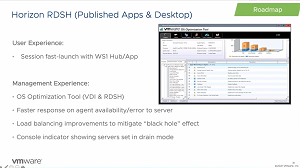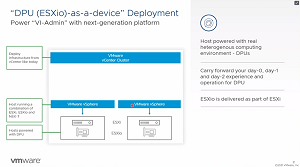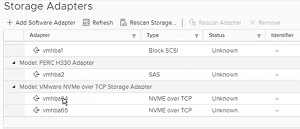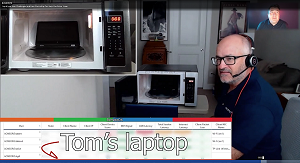Take Five With Tom Fenton
Take Five: VMworld 2021 -- What You Missed (Including Tom Microwaving a Laptop)
Tom lists his top 5 and then turns presenter in a session where he puts a laptop in a microwave oven as part of an experiment to limit Wi-Fi ... and then turns it on!
VMworld North America 2021 was held virtually Oct. 5-7. VMware did have a slack channel opened for the event, but it was hard to gauge how many people attended the event and how engaged they were with it.
Below are the five technologies, subjects and sessions that most caught my eye at this event.
Take 1: VMware Announcements
VMworld announcements were centered around multicloud, that is using the resources from public and private clouds from a single VMware management console. Project Arctic was the first thing highlighted, with its promise of total vSphere integration with cloud providers. VMware co-announced with Dell Technologies Apex Cloud Services with VMware Cloud. This is an Infrastructure-as-a-Service (IaaS) that has Dell place pre-configured cloud instances at a customer site. AWS Outpost was another interesting IaaS concept where a rack is shipped to a customer's site with VMware Cloud installed on it and is managed by them. Both are kind of an interesting concept for those that need data locality and/or need to control costs but don't want to manage the infrastructure.
The edge was not left out, and VMware announced its line of products under the moniker of VMware Edge. VMware Edge solutions include VMware Edge Compute Stack, VMware SASE and VMware Telco Cloud Platform. Some early partners that are working with VMware include Dell with its ruggedized Dell EMC VxRail D Series systems that are optimized for edge deployments and Lenovo's ThinkSystem SE350 Edge Servers for processing data at the edge.
VMware Horizon: The major thrust around Horizon was, unsurprisingly, its cloud story. In one VMworld blog , VMware states that in the next generation of Horizon it will combine its two platforms (Horizon 8 and Horizon Cloud on Microsoft Azure) for delivering desktops and application into a single platform where most of the VDI infrastructure components are on the Horizon Control Plane, which will be managed by VMware and delivered as a cloud-based service. VMware is also touting that it will be API-driven, which will open it up to a lot of automation and third-party integration.
In What's New with VMware Horizon 8 [EUS1492] VMware not only recapped what's new in the shipping version of Horizon but also what is on the roadmap for future versions. Of course, none of these new features are guaranteed to make it into shipping versions, but two of the proposed features caught my eye. Fast-launch desktops anticipate when a user will need a desktop and gets one ready for use. They also mentioned that the much-loved and oft-used OS Optimization Tool will be a feature rather than a fling; this will make it a fully supported VMware product.
 [Click on image for larger view.]
[Click on image for larger view.]
Take 2: Kubernetes
VMware has been betting big on Kubernetes (K8S). At VMworld 2018, VMware announced that it had acquired Hepito, a company that was started by two Google engineers who developed Kubernetes. Hepito offered various services and products based around Kubernetes, including Sonobuoy, which runs conformance tests on a Kubernetes cluster. Although Sonobuoy is still a viable product, it is now under the VMware K8S product line, Tanzu. People have complained about the complexity of setting up Tanzu, but it does look like it is maturing, and the company has gotten a lot of those early issues worked out and has released a community Edition of Tanzu. VMware states that it is "a freely available, community-supported, open-source distribution of VMware Tanzu that you can install and configure in minutes on your local workstation or your favorite cloud." The K8S marketplace is highly competitive, and it will be interesting to see if Tanzu can gain mind-share in it.
Take 3: Project Monterey
Two of my five Must-See VMworld 2021 Sessions were based on Monterey, and I did have a chance to sit in on both of these sessions. Project Monterey allows vSphere to manage Data Processing Units (DPU) and SmartNICs. VMware did introduce a new term, ESXio, which I was not familiar with and am still trying to wrap my head around.
 [Click on image for larger view.]
[Click on image for larger view.]
My big take always is that yes, VMware customers are starting to experiment with DPUs. The main reasons for this are that with the software-defined datacenter, a larger and larger percentage of CPU capacity is being used by infrastructure services (software-defined storage, networking, etc.), and by offloading these services, it frees up the core CPUs to perform their computational services while giving better isolation between the workload and infrastructure.
Take 4: NVMe/TCP
Both Dell and VMware announced a week before VMworld that they are throwing their weight behind NVMe/TCP protocol to transfer remote NVMe devices to servers. Currently there are a half dozen different remote NVMe protocols. One of the huge advantages NVMe/TCP has over the others is that it uses the networking hardware already in datacenters, and it is currently being used by some of the major cloud providers. With VMware and Dell both supporting NVMe/TCP, it will become the standard for the datacenter. In session MCL2766S they showed three demos of NVMe/TCP including a Dell PowerStore system running ESXi using it. With NVMe/TCP NVMe, storage is presented to the ESXi host using a storage adapter just like one would see for an iSCSI target or other storage adapters.
 [Click on image for larger view.]
[Click on image for larger view.]
Take 5: Provisioning VM through K8S
In the session (APP1564) VMware discussed how it will allow provisioning full VMs using Kubernetes APIs to deploy, configure and manage them. By doing this, developers and other consumers of virtual machines can bypass the vSphere administrator and deploy them programmatically. This will be done using VM Service, which extends K8S to support the creation and management of VMs. This is a community-first development project and they are looking for community involvement, so if this is appealing, you could help shape the roadmap for it.
Bonus: Horizon Troubleshooting
I had the opportunity to do a session with Trentent Tye titled EUS3057S - Top 5 End-User Challenges and How ControlUp Can Help You Solve Them. In this session, which was sponsored by my employer, ControlUp, we showed how to monitor and solve five of the most challenging Horizon problems. We covered the usual suspects such as slow logins and noisy neighbors, but the one issue that we really wanted to dig into -- and one that is the current bane of administrators -- was how to diagnose issues with the client that connects to the remote desktops and applications. To create an environment that limited the Wi-Fi signal, we placed a laptop in a microwave oven. Then with a little egging on by Trentent, I decided to see what happens when you turn on the microwave!
 [Click on image for larger view.]
[Click on image for larger view.]
Be sure to see the session to see what happened. BTW, VMware announced that it would be reselling two of ControlUp's new solutions; Remote DX, which monitors a Horizon client and Scoutbees, which monitors the availability of Horizon network resources such as UAG, remote desktops and applications. We demonstrated both of them in this session.
I am a little leery about "attending" virtual conferences such as these as I feel that the personal interactions play such a big part of the experience and pre-recorded sessions can lose a lot of the magic of having a live audience. As a virtual attended it was nice to view many of the sessions on my timeline and not worry about having to get a seat in a popular session. VMworld will be held in-person next year in San Francisco at the end of August.
About the Author
Tom Fenton has a wealth of hands-on IT experience gained over the past 30 years in a variety of technologies, with the past 20 years focusing on virtualization and storage. He previously worked as a Technical Marketing Manager for ControlUp. He also previously worked at VMware in Staff and Senior level positions. He has also worked as a Senior Validation Engineer with The Taneja Group, where he headed the Validation Service Lab and was instrumental in starting up its vSphere Virtual Volumes practice. He's on X @vDoppler.